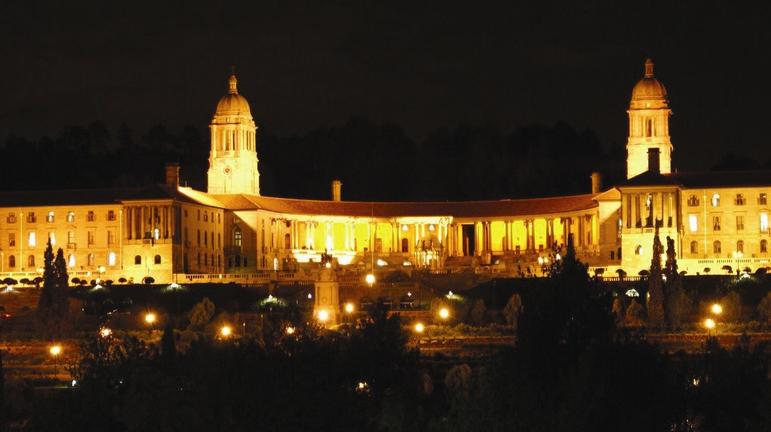South Africa has 3 capital cities: executive Pretoria where the government’s administration is based, Bloemfontein which is the judicial capital, and Cape Town as the oldest city is South Africa is the legislative capital.
The Union Building located in Pretoria were designed by well-known architect Sir Herbert Baker in 1908. Construction was completed in 1913. At the time, it was the largest building in South Africa, and possibly the largest building work in the Southern Hemisphere. It was meant to house the entire Public Service which accounts for its size. Built on the highest point of Pretoria it is official seat of South Africa’s government and houses The Presidency.
While largely determined by the nature of the site, the concept that drove the design was that of an Acropolis, a public building that is a national ornament, establishing the nation and easily persuading people to love their country. This was also why the terraces and retaining walls in the grounds are built predominantly of mountain stone quarried on the site itself. The sentiment didn’t go as far as the actual design. Not only was the basic concept of an Acropolis, but there are also influences of the Italian and British Renaissances, and Cape Dutch elements. The Union Building is surrounded by beautifully landscaped gardens which host a number of statues and memorials.
The complex stretches almost 300 meters in a semicircular shape with ornate towers on either side. It was meant to depict the dual aspect of the country at the time, the 2 main languages. Today there are 11 official languages in South Africa. In 1956 the historic Women’s March where an estimated 20,000 women of all races descended on Pretoria to protest the apartheid government’s Pass Laws for black women, ended at the Union Buildings.
Perhaps its greatest moment was in 1994. The building was the site of much jubilation as South Africa’s first democratically elected president, Nelson Mandela was inaugurated there, ushering in a new era.
